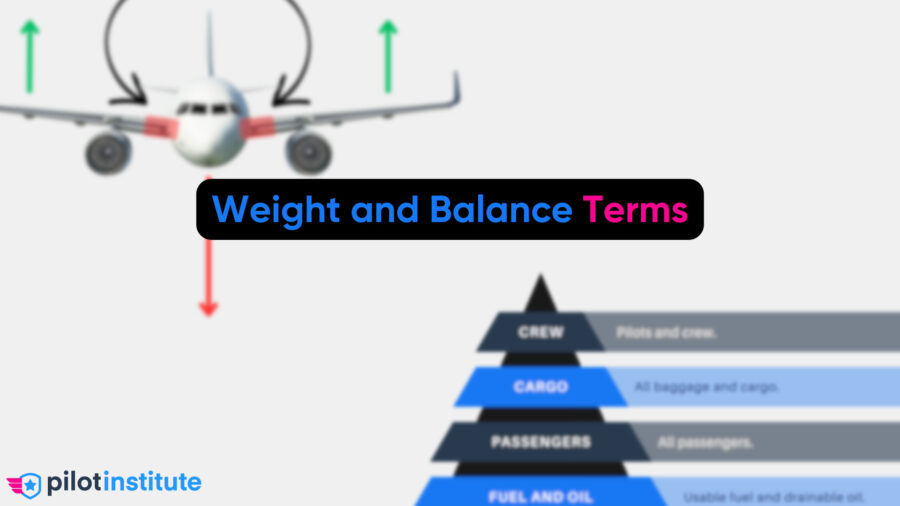-
Key Takeaways
-
Requirements
- General Eligibility
-
Training
- Ground Training
- Flight Training
-
Knowledge Tests
- Fundamentals of Instructing (FOI) Knowledge Test
- Flight Instructor Airplane Knowledge Test (FIA)
-
Endorsements
-
Practical Test
- Test Day
- Example Practical Test – Ground
- Example Practical Test – Flight
- Passing Criteria
-
Conclusion
Pursuing a flight instructor certificate is not a choice a pilot takes lightly.
Nor should they.
Becoming a Certified Flight Instructor (CFI) is challenging.
To become a Certified Flight Instructor (CFI), you need a commercial or airline transport pilot certificate with an instrument rating and at least 250 hours of flight time. Training involves understanding the fundamentals of instructing (FOI), mastering commercial pilot knowledge areas, creating lesson plans, and effectively teaching both in classrooms and in-flight.
But if you’re ready for the challenge, read on. We’ll cover everything you need to know to earn your flight instructor certificate.
Key Takeaways
- To become a flight instructor, you must hold a commercial or airline transport pilot certificate. You must also have an instrument rating.
- You will receive ground and flight training to obtain your instructor rating. You will also need to pass two knowledge tests.
- Your practical flight test will consist of you providing mock instruction to a DPE.
Requirements

The art of flight instruction goes back well over 100 years. In 1908, Wilbur Wright began teaching cadets to fly the Wright Flyer. Some students soloed after an astoundingly brief three hours of training!
Of course, there were no requirements for flight instructors or flight students at the time. Wilbur was, quite literally, flying by the seat of his pants.
As you’ve probably surmised, things are a bit different nowadays. The FAA has outlined precise standards for who can give flight instruction.
For this article, we’ll assume that you have a commercial pilot certificate with an Airplane Single-Engine Land (ASEL) category and class rating.
General Eligibility
There are a few requirements that you need to meet before starting your CFI training.
The requirements found in 14 CFR § 61.183 states that a pilot must:
- Be at least 18 years of age.
- Be able to read, speak, write, and understand the English language.
- Hold either a commercial pilot certificate or an airline transport pilot (ATP) certificate.
- The certificate must be of the same category and class rating as the instructor category and class that is sought.
- Hold an instrument rating.
- Have at least 250 hours of total time.*
- Hold at least a Third-Class FAA Medical certificate.
*This hour requirement is not directly from 61.183. While the flight instructor certificate has no time minimum, the commercial certificate does. Hence the 250-hour requirement. Commercial pilots trained at Part 141 schools need only 190 hours to qualify.
Training

Ground Training
Now that you’re qualified to pursue the flight instructor certificate, your training can begin.
The Fundamentals of Instructing
It’s tempting to assume that there is a one-size-fits-all approach to teaching students. After all, good instruction is good instruction, right?
Unfortunately, it’s not as simple as that.
Every student learns differently. We all have different needs, goals, strengths, fears, and weaknesses. It’s the instructor’s job to assess how the student is progressing and adapt training as necessary. This requires skill and a bit of psychology too.
This is why the FAA created the Fundamentals of Instructing (FOI). The FOI helps new instructors understand and apply the principles of learning theory.
Some CFIs downplay the importance of the FOI. Then they wonder why their students aren’t progressing well. The difference between a mediocre instructor and an effective instructor isn’t necessarily their stick-and-rudder skills. It’s often their instructional skills.
So be that effective instructor and take learning how to teach seriously! Your future students deserve it.
Knowledge Areas
On top of the FOI, a CFI candidate needs to be well-versed in the knowledge areas up to the commercial certificate level. This means all of the knowledge areas. Plus, you’ll need to know the (new to you) regulations that apply to flight instructors, like endorsements.
Helpful Resources:
- Aviation Instructor’s Handbook
- Pilot’s Handbook of Aeronautical Knowledge
- FAR/AIM
- Airplane Flying Handbook
The Flight Instructor – Airplane PTS (Practical Test Standards) contains an excellent list of additional helpful documents.
Lesson Plans
The amount of knowledge you need to learn as an instructor is intimidating. Even if you jump into CFI training right after your commercial checkride, there will be knowledge areas you won’t have an instructor-level grasp on. Take this time to review each knowledge area by creating lesson plans.
The Flight Instructor – Airplane PTS is your best lesson plan guide. Each lesson plan must hit all of the key points listed in the PTS.
You don’t have to create each lesson plan from scratch. But you do need to understand how to use your lesson plans to guide you along as you teach. Think of them more like a checklist than something you’ll be reading aloud.
Don’t Be Boring
Some CFIs underestimate the impact of boredom on their students. Maybe you’ve had unfortunate first-hand experience with this phenomenon.
A bored student will not retain what you’re teaching. It takes skill and practice to make a lesson interesting, particularly lessons on aviation’s drier topics. If you try to dump knowledge into a student, it will drain out their ears.
You need to incorporate some element of excitement and intensity in each lesson. Yes, even when teaching all 17 points of the Runway Incursion Avoidance task!
Giving Endorsements
Before this point, you’ve been the pilot receiving endorsements from your instructor. Soon, you’ll be the pilot giving the endorsements.
Advisory Circular AC 61-65H is a fantastic resource for all things endorsements. You don’t need to know every endorsement word-for-word. That’s not something you should try to commit to memory. But you’ll need to know which endorsements are required for student pilots up to commercial pilots, when you need them, and where to find them.
You will get students who are already pilots but who want to add an additional aircraft rating to their current certificate. AC 61-65H covers those endorsements as well.
Flight Training
When you’re not on the ground studying the FOI and making lesson plans, you’ll be learning how to teach in the aircraft.
FAR 61.183 requires that you have at least 15 hours of pilot-in-command time in an airplane of the same category and class as your desired instructor rating. This is not usually an issue for most pilots. However, if you do all your CFI training in a twin-engine Cessna 310, you can’t use a Cessna 172 for your practical test.
A Different Perspective
Flying from the right seat is a strange and humbling experience at first.
The sight picture out the window is all wrong, causing you to land left of the centerline. Steep turns are all over the place. Switching yoke and throttle hands has made you a ham-fisted pilot. In many training aircraft, you’ll have to look at the flight instruments on the other side of the cockpit since they are no longer in front of you.
This uneasy feeling can be disheartening. You’re training to instruct, but all of a sudden you’re flying more wobbly than a pre-solo student pilot.
The good news is that after a few hours of flying, you’ll feel perfectly comfortable flying from the right seat. Fear not.
The Aircraft is a Poor Classroom
An aircraft is a terrible environment in which to instruct complex topics. It’s noisy and full of distractions. It is not the place to discuss the intricacies of lift vectors in slow flight.
With experience, you’ll learn which discussions are best had on the ground before and after the flight. This will make your in-flight instruction short and easy for the student to digest. Both you and your student will end each flight a little less exhausted. Especially when the “student” is your bored flight instructor.
Spinning
One of the CFI eligibility requirements is that the applicant is “competent and possesses instructional proficiency in stall awareness, spin entry, spins, and spin recovery procedures” by way of flight training.
This means you’re going to get to experience the thrill of spin recovery training!
The first time you see the ground rotating before your eyes, you won’t know what’s going on. However, after a few spin recoveries, you’ll get the hang of it. You’ll also leave with a visceral understanding of just how dangerous spins are at low altitudes.
Feeling the Confidence
Your instructional prowess, both on the ground and in the air, is now of a high quality. It’s time to start thinking about the knowledge tests and the practical test.
Knowledge Tests

You must pass two knowledge tests before you can take the flight instructor practical test.
The first is the FAA Fundamentals of Instructing (FOI) Knowledge Test. The second is the FAA Flight Instructor Airplane (FIA) Knowledge Test.
Fundamentals of Instructing (FOI) Knowledge Test
The FOI test covers the instructional topics found in the Aviation Instructor’s Handbook. You have 1.5 hours to answer 50 questions, and 70% is the minimum passing score.
If you already hold a flight or ground instructor certificate, hold a teacher’s certificate for 7th grade or higher, or are a university teacher, you don’t need to take the FOI test (FAR 61.183(e)). However, you must understand how the FOI principles apply to flight students.
Flight Instructor Airplane Knowledge Test (FIA)
The FIA test covers aviation knowledge areas up to the commercial certificate level. It also includes topics specific to flight instructors.
Use the previously mentioned FAA handbooks/documents and a commercial test prep program of your choice to prepare. You have 2.5 hours to answer 100 questions, and 70% is the minimum passing score.
You must take your practical test within 24 calendar months of passing your knowledge tests.
Endorsements
Your instructor needs to give you several endorsements before you can take the practical test. Unlike with previous certificates, your CFI doesn’t need to sign you off for the knowledge tests. They only have to endorse that they’ve instructed you on the applicable subjects.
As a CFI candidate, it’s up to you to know when you’re ready.
FAR 61.183 provides the entire list of endorsements, but we’ll distill it down for you here.
- FAR 61.183(d) – Receive and log ground training on the FOI (FAR 61.185(a)(1)).
- FAR 61.183(d) – Receive and log ground training on aeronautical knowledge areas for a recreational, private, and commercial pilot certificate (FAR 61.185 (a)(2)).
- FAR 61.183(g) – Receive and log ground and flight training on the areas of operation listed in FAR 61.187(b).
- FAR 61.39(6)(i-iii) – Practical test endorsements (applies to any practical test).
- Received and logged training time in the preceding 2 calendar months of the practical test (no minimum training time for CFI).
- Applicant is prepared for the practical test.
- Applicant has “demonstrated satisfactory knowledge” on deficient knowledge test areas.
- FAR 61.183(i)(1) – Competence in stall awareness, spin entry, spins, and spin recovery.
Practical Test
You’ve passed your knowledge tests. You’re feeling good about teaching effectively on the ground and in the air (yes, even eights-on-pylons). Your lesson plans are in hand, and your instructor has given you all of the required endorsements.
For the past few weeks or months, you’ve been practicing teaching with your instructor, your fellow pilots, and anyone else who will listen. Thank you, (patient) friends and family.
It’s now time to take the practical test.
Test Day
Like all practical tests, there is a ground “oral” portion and a flight portion.
The practical test will start by going over your qualifications and endorsements. Your Designated Pilot Examiner (DPE) will make sure all is in order before proceeding to the oral exam.
Anticipate the CFI oral exam to be much longer than your previous exams. Expect four to five hours or so, depending on your DPE.
The test will follow the requirements listed in the PTS, so there shouldn’t be any surprises.
Example Practical Test – Ground
Every practical test is different, but let’s go over a typical example.
FOI
You’ll start by going over the Fundamentals of Instruction. Some of it will be recalling rote definitions, sure. However, your DPE will likely use hypothetical students in unique training situations. This will require you to apply your FOI knowledge in complex ways.
Expect to explain how to deal with students who exhibit defense mechanisms and hazardous attitudes. You might get a rusty pilot with a medical issue coming back to aviation after years of not flying. These hypothetical students are never easy cases!
Endorsements
Your hypothetical students will have aviation goals they want to meet. Your job is to know what training and endorsements they need. You don’t have to have the endorsements memorized word for word. However, you will need to find the proper endorsements in AC 61-65H and know how to apply them.
Lesson Plans
You’ll teach lessons to your DPE like they’re a student. They may challenge you by not understanding things. Since you’ve practiced teaching your lessons, getting them back on track won’t be difficult for you.
Your DPE can ask you to teach any of the tasks in the PTS, but there are some tasks they are required to ask you about. In the PTS, look at the notes immediately after each Area of Operation. The note indicates which tasks are mandatory and which are at the DPE’s discretion.
Once you’ve satisfied your DPE with your ground training abilities, it’s time to get in the aircraft.
Example Practical Test – Flight
For the flight, your DPE will be part examiner and part greenhorn student. You, of course, will be the consummate professional pilot.
The DPE can ask you to perform and instruct taxiing, takeoffs, landings, straight-and-level flight, turns, climbs, descents, maneuvers, stalls, emergency procedures, and anything else you’re qualified to teach.
The DPE will perform some of the maneuvers, takeoffs, and landings themselves. You will instruct them as you would a student. It is your job to give them appropriate constructive criticism and intervene if necessary.
The DPE will expect you to use checklists, perform briefings, apply good aeronautical decision-making, establish a sterile cockpit, and utilize a positive exchange of controls.
Passing Criteria
It’s helpful to know exactly what the DPE expects of you on your practical test. Thankfully, it’s spelled out in the PTS.
The applicant demonstrates satisfactory performance with regard to:
- Knowledge of:
- The fundamentals of instructing.
- Technical subject areas.
- Instructor responsibilities concerning pilot certification.
- Instructor responsibilities concerning logbook entries and endorsements.
- Runway incursion avoidance and how to teach it.
- Ability to demonstrate and instruct procedures and maneuvers up to the Commercial Pilot skill level.
- Competence in teaching procedures and maneuvers.
- Competence in describing, recognizing, analyzing, and correcting common errors simulated by the examiner.
- Creating and using lesson plans and course syllabi.
If you can check all of those boxes, you’ll officially be the world’s newest flight instructor.
Congratulations!
Conclusion
Flight instructing can be an incredibly rewarding job. But becoming a CFI isn’t easy.
Once you decide to pursue your flight instructor certificate, take your training one step at a time. Embody a safety mindset. Maintain your enthusiasm for flying, and be professional in all things.
Interested in what type of salary you’ll get as a flight instructor? Check out this article on how much pilots make.



